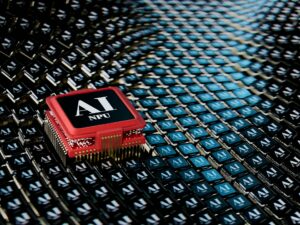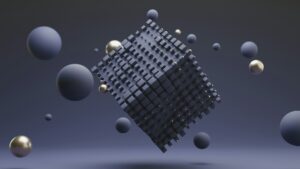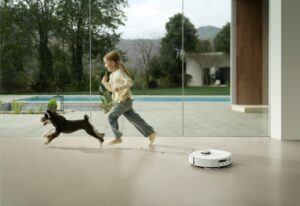With the help of digital twins, virtual mirrors of the real world are being created.

With the help of digital twins, virtual mirrors of the real world are being created.
Through the creation of accurate virtual reproductions that mirror physical products, processes, or surroundings, digital twins are bringing about a revolution in the way that industries design, monitor, and optimize real-world systems. In order to imitate the behavior of their physical counterparts, these technologically advanced simulations incorporate real-time data from sensors, Internet of Things devices, and analytics driven by artificial intelligence. Digital twins are rapidly altering a wide range of industries, including manufacturing, urban planning, healthcare, and numerous others. They do this by providing businesses with the ability to test, anticipate, and enhance operations within a virtual environment.
1. Acquiring Knowledge of Digital Twins;
One definition of a digital twin is a dynamic and virtual representation of a physical entity, which can be anything from a machine to a structure to a city to even an organ in a human being. Digital twins, in contrast to traditional modeling, are able to continuously update themselves based on real-time data, which enables them to accurately reflect the current state of affairs and forecast the future. Because of this, a “mirror world” is created in which decision-makers are able to experiment, optimize, and debug without having an effect on the actual systems.
2. The Importance of Internet of Things and Sensors
The information that is gathered by digital twins comes from a network of sensors and Internet of Things devices that are installed in the physical system. The information that these sensors collect includes temperature, pressure, motion, energy consumption, and a variety of other factors. The digital twin receives its data from the real-time data, which enables it to correctly mimic the current condition of the physical system. By integrating these two processes, simulations become significantly more accurate and actionable than static models.
3. Applications within the industrial sector
The use of digital twins in the manufacturing industry allows for the monitoring of production lines, the optimization of operations, and the prediction of equipment faults before they occur. Engineers are able to test new workflows, discover bottlenecks, and arrange maintenance in advance when they simulate the operation of machinery in a virtual environment. Downtime is cut down, efficiency is increased, and operational costs are reduced as a result of this.
4. Smart cities and urban planning respectively
When it comes to the construction of environmentally friendly urban landscapes, cities are increasingly looking to digital twins. In order to mimic traffic patterns, energy consumption, water usage, and environmental impact prior to the implementation of changes, planners can create virtual reproductions of entire districts. The quality of life for people is improved as a result of this since it makes it possible to construct infrastructure, prepare for disasters, and implement public safety measures in a more effective manner.
5. Medical Care and Individualized Forms of Treatment
Because they can create virtual replicas of human organs or even entire bodies, digital twins are making a significant impact in the field of healthcare. It is possible to mimic the evolution of the disease, forecast how patients will react to treatment, and use these models to guide surgical planning. Through the integration of patient-specific data from imaging, genomics, and wearables, digital twins make it possible to provide genuinely individualized healthcare experiences, thereby lowering risks and increasing results.
6. Renewable Energy and Environmental Sustainability
The use of digital twins in energy systems allows for the monitoring of grids, the optimization of energy distribution, and the prediction of equipment problems. With the use of digital twins, utilities are able to model the integration of renewable energy sources, anticipate peak demand, and improve overall efficiency. In a similar manner, building management systems make use of digital twins in order to improve the performance of HVAC systems, decrease energy consumption, and significantly lessen their impact on the environment.
7. Predictive analytics and artificial intelligence in digital twins
The development of digital twins is significantly aided by the application of artificial intelligence. The algorithms that are used in machine learning are able to examine both historical and real-time data in order to identify patterns, predict future behavior, and prescribe actions that are optimum. Through the utilization of this predictive power, digital twins are transformed from passive simulations into proactive instruments that may be utilized for decision-making, risk management, and operational improvement.
8. Virtual Worlds That Are Completely Integrated Into the Future
The ultimate goal of digital twins is to create a fully integrated virtual mirror of the real world. This mirror would allow cities, factories, healthcare systems, and even ecosystems to function efficiently within a digital environment that is synchronized with itself. It is possible for enterprises to simulate complex interactions across systems, maximize resources, and respond to challenges with an unparalleled level of precision if they connect many digital twins. It is anticipated that this interconnected network of virtual duplicates will play a crucial part in the development of civilizations that are more intelligent, safer, and more efficient.
A new dimension is being created by digital twins, which are bringing together the actual and virtual worlds in a point of intersection. They give actionable insights, predictive capabilities, and chances for improvement across a variety of industries by merging Internet of Things (IoT), artificial intelligence (AI), and real-time data. Digital twins will develop into comprehensive virtual mirrors of our physical environment as technology continues to expand. This will allow for more intelligent decision-making, increased efficiency, and more resilient systems across all industries.




